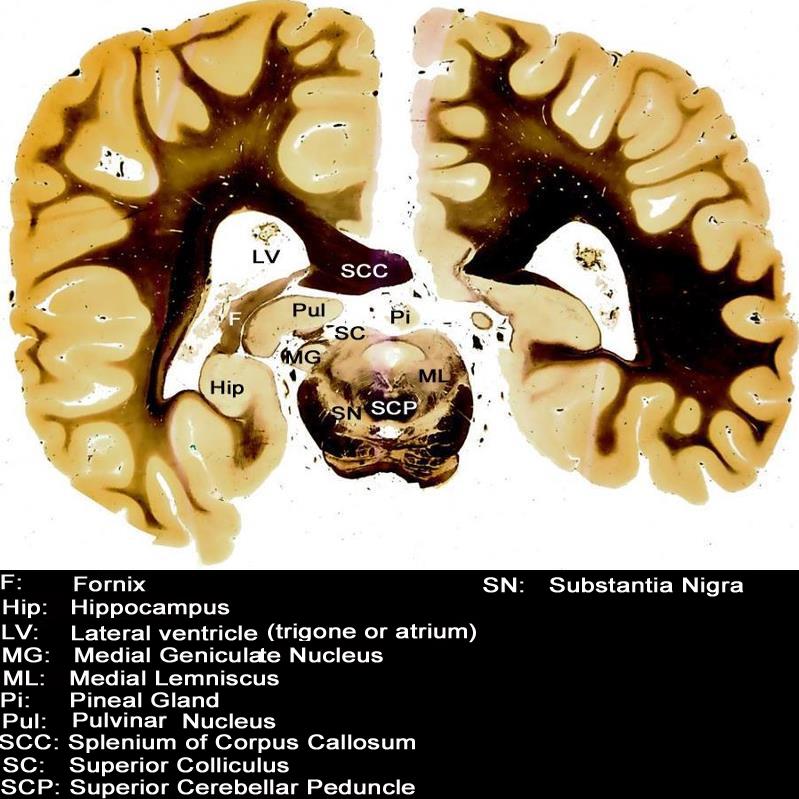Copyright 2009
“The singular intersection point of the material and immaterial” – Rene Descartes
The pineal gland produces melatonin, which regulates circadian rhythm (sets internal biological clock). The retina provides the regulator input for the pineal gland through the suprachiasmatic nucleus. The gland shrinks in puberty, suggesting a role in sexual development. It may also function in addictive behavior.
Disease
Dysfunction of the pineal gland would result in abnormal sleep cycles and/or sexual development.
Diagnosis
It is often calcified, making it visible in neuro-imaging. Melatonin levels would also be measured to determine hyper or hypo activity in the pineal gland.
Treatment
Treatment would be pharmacological.
 Pineal – Small Central Structure Pineal – Small Central Structure |
|
Courtesy Department of Anatomy and Neurobiology at Boston University School of Medicine Dr. Jennifer Luebke , and Dr. Douglas Rosene 97352.C13.9L01 |
